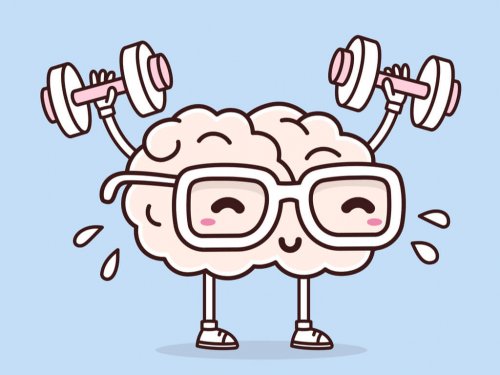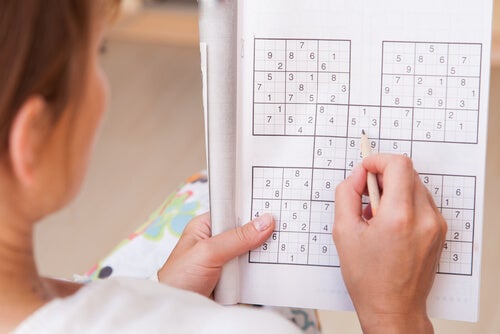Neurobics - A Workout for the Brain


Written and verified by the psychologist Marián Carrero Puerto
The cult of physical appearance prevails in Western society. Thus, many people obsess over staying in shape and having sculpted bodies. However, few people worry about exercising their brains. Wait, what? Does this mean there’s a way to keep your brain fit? Yes, there is! Continue reading to learn more about Neurobics, a form of brain workout.
Although it’s good to take care of your body and overall appearance, don’t forget that your brain is a muscle and also requires workouts. It’s not just another organ but a priceless operative system. Thus, you should try Neurobics, a great way to stay in shape.
You can adjust the proposed exercises to suit your specific needs. This way, you can enhance your mental faculties according to your age. There are exercises for both children and adults of every age.
“Every man can, if he so desires, sculpt his own brain.”
-Santiago Ramón y Cajal-

What exactly is Neurobics?
This is a mental, brain, or neuron workout comprised of a set of exercises, problems, and mental puzzles that can improve mental performance. Lawrence Katz and Manning Rubin, neurobiologists at Duke University in Durham, North Carolina, came up with the concept.
These authors conceived Neurobics as an exercise program for a group of brain muscles one must stimulate through routine changes and through a series of exercises that can maintain long-term optimal mental health.
According to Katz and Rubin (1999), Neurobics is very different from other types of brain exercises, which generally involve logic exercises, puzzles, and isolated sessions.
Instead, Neurobics requires the use of all your senses in order to enhance and generate the various natural paths the brain possesses. This way, you forge new associations between different types of information. Deliberately creating new associative patterns is a central part of this type of brain exercise.

Forms of exercises
The workout proposed in Neurobics involves the cerebral hemispheres, body movement, and the use of all the senses, especially the use of the eyes in order to stimulate myelin and ease of learning.
This program has the following goals: to improve a person’s physical condition, to maintain the quality of their movements, to strengthen their psychological and cognitive abilities, and to help their brain-body communication in order to eliminate any stress and tensions from their body.
You can do many exercises. The more creative you get, the wider your range of possibilities will be. Here are some ideas:
- Do Sudoku puzzles, timing them to keep track of your progress.
- Learn new words and incorporate them into your future conversations.
- Flip your wristwatch upside down.
- Identify the time in a clock as viewed through a mirror.
- Walk backward through your house (do so carefully).
- Brush your teeth or comb your hair with your non-dominant hand.
- Look at pictures upside down and appreciate their details.
- Use your cellphone with your non-dominant hand.
- Dress with your eyes closed.
- Vary the route you take to your work, home, or school.
In short, any exercises that break your routine and automatic behaviors will incite your brain to work.
What are the benefits of Neurobics?
For a long time, scientists believed that the brain could only create neural connections during childhood. But Katz concluded that the brain allocates and processes any necessary sensory contributions, generating new structures and connections at different ages. With these exercises, you can:
- Create new connections (synapses) at a brain level, through the experimentation of new daily life activities.
- Stimulate the production or regeneration of neural networks through the sensory network.
- Induce the production of neurotrophins or specific molecules that favor the survival of neurons.
- Doing brain exercises is important because they help use the whole brain and body and improve concentration, balance, thinking, memory, creativity, hearing, attention, perception, and concentration.
Therefore, “it’s a strategy that enhances learning skills and attitudes and helps prevent and remedy motor deficiencies, behavioral problems, orality, writing, and hyperactivity” (Orellana, 2010).
Thanks to the exercises proposed by Neurobics, it’s possible to develop new structures and brain connections. Also, you can prevent the manifestation of various neurodegenerative disorders, such as Alzheimer’s disease, depression, and Parkinson’s, with the help of neurobiological techniques.
The cult of physical appearance prevails in Western society. Thus, many people obsess over staying in shape and having sculpted bodies. However, few people worry about exercising their brains. Wait, what? Does this mean there’s a way to keep your brain fit? Yes, there is! Continue reading to learn more about Neurobics, a form of brain workout.
Although it’s good to take care of your body and overall appearance, don’t forget that your brain is a muscle and also requires workouts. It’s not just another organ but a priceless operative system. Thus, you should try Neurobics, a great way to stay in shape.
You can adjust the proposed exercises to suit your specific needs. This way, you can enhance your mental faculties according to your age. There are exercises for both children and adults of every age.
“Every man can, if he so desires, sculpt his own brain.”
-Santiago Ramón y Cajal-

What exactly is Neurobics?
This is a mental, brain, or neuron workout comprised of a set of exercises, problems, and mental puzzles that can improve mental performance. Lawrence Katz and Manning Rubin, neurobiologists at Duke University in Durham, North Carolina, came up with the concept.
These authors conceived Neurobics as an exercise program for a group of brain muscles one must stimulate through routine changes and through a series of exercises that can maintain long-term optimal mental health.
According to Katz and Rubin (1999), Neurobics is very different from other types of brain exercises, which generally involve logic exercises, puzzles, and isolated sessions.
Instead, Neurobics requires the use of all your senses in order to enhance and generate the various natural paths the brain possesses. This way, you forge new associations between different types of information. Deliberately creating new associative patterns is a central part of this type of brain exercise.

Forms of exercises
The workout proposed in Neurobics involves the cerebral hemispheres, body movement, and the use of all the senses, especially the use of the eyes in order to stimulate myelin and ease of learning.
This program has the following goals: to improve a person’s physical condition, to maintain the quality of their movements, to strengthen their psychological and cognitive abilities, and to help their brain-body communication in order to eliminate any stress and tensions from their body.
You can do many exercises. The more creative you get, the wider your range of possibilities will be. Here are some ideas:
- Do Sudoku puzzles, timing them to keep track of your progress.
- Learn new words and incorporate them into your future conversations.
- Flip your wristwatch upside down.
- Identify the time in a clock as viewed through a mirror.
- Walk backward through your house (do so carefully).
- Brush your teeth or comb your hair with your non-dominant hand.
- Look at pictures upside down and appreciate their details.
- Use your cellphone with your non-dominant hand.
- Dress with your eyes closed.
- Vary the route you take to your work, home, or school.
In short, any exercises that break your routine and automatic behaviors will incite your brain to work.
What are the benefits of Neurobics?
For a long time, scientists believed that the brain could only create neural connections during childhood. But Katz concluded that the brain allocates and processes any necessary sensory contributions, generating new structures and connections at different ages. With these exercises, you can:
- Create new connections (synapses) at a brain level, through the experimentation of new daily life activities.
- Stimulate the production or regeneration of neural networks through the sensory network.
- Induce the production of neurotrophins or specific molecules that favor the survival of neurons.
- Doing brain exercises is important because they help use the whole brain and body and improve concentration, balance, thinking, memory, creativity, hearing, attention, perception, and concentration.
Therefore, “it’s a strategy that enhances learning skills and attitudes and helps prevent and remedy motor deficiencies, behavioral problems, orality, writing, and hyperactivity” (Orellana, 2010).
Thanks to the exercises proposed by Neurobics, it’s possible to develop new structures and brain connections. Also, you can prevent the manifestation of various neurodegenerative disorders, such as Alzheimer’s disease, depression, and Parkinson’s, with the help of neurobiological techniques.
All cited sources were thoroughly reviewed by our team to ensure their quality, reliability, currency, and validity. The bibliography of this article was considered reliable and of academic or scientific accuracy.
Aguirre Vargas, I. (2012). Gimnasia cerebral para niños de 4 a 5 años como instrumento de estimulación de las capacidades (Bachelor’s thesis, Universidad del Azuay).
Díaz Bravo, L. E., & Chapoñan Guivar, K. (2017). Propuesta de estrategias basada en Gimnasia Cerebral para potenciar procesos de atención en estudiantes del nivel inicial, Chiclayo 2014.
Novoa López, MH (2018). Diseño y aplicación de un programa para el desarrollo de la creatividad y la influencia en la calidad de los resultados académicos 2018.
Orellana, R. (2010). Gestión de la calidad en aprendizajes significativos. 2da. Edición. Lima, Perú: Gráfica Ángeles S.A.C.
This text is provided for informational purposes only and does not replace consultation with a professional. If in doubt, consult your specialist.







